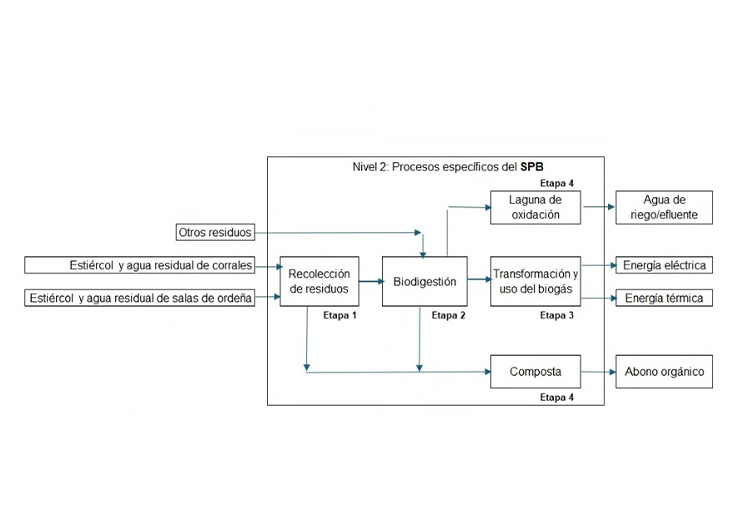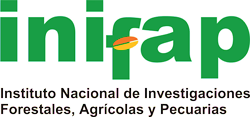Gestión de residuos agroindustriales: un enfoque de bioeconomía circular
DOI:
https://doi.org/10.29312/remexca.v16i6.3792Palabras clave:
biomasa, compostaje, residuos agroindustrialesResumen
El objetivo de este ensayo fue mostrar como la gestión de residuos agroindustriales puede contribuir no solo a su valorización sino también a la reducción de la contaminación contribuyendo a la sostenibilidad económica ambiental. El estudio fue de 2017 a 2024, en la región conocida como la Comarca Lagunera en el Norte-Centro de México. Al inicio de este trabajo se presentan los resultados de un proceso local que, con sus limitaciones, añade valor contextual y aplicabilidad regional al tratar residuos, generar energía, producir abono orgánico y agua tratada de forma sostenible. La mejora y actualización de estos procesos locales iniciados hace varios años se comparan con el diagrama de la mariposa de Ellen MacArthur en una versión adaptada a los establos lecheros de la región. La revisión bibliográfica de experiencias documentadas en revistas científicas donde se discuten: la extracción de compuestos valiosos antes de la biodigestión, la digestión anaeróbica y el compostaje integrados, los tipos de residuos agroindustriales, la aplicación para biomasa de nueva generación y el análisis del ciclo de vida para evaluar el impacto ambiental. Finalmente, se destaca la valorización de residuos para procesos de biorrefinería y bioeconomía circular. Se concluyó que la bioeconomía ofrece beneficios, aunque su adopción enfrenta retos, requiriendo complementarse con estudios económicos, y en particular el diseño de procesos eficientes de recolección de residuos valiosos basados en una cadena de suministro que no solo logre hacer más ágil la captación de los residuos sino también procesos eficientes de producción y distribución.
Descargas
Citas
Aghel, B.; Behaein, S.; Wongwises, S. and Shadloo, M. S. 2022. A review of recent progress in biogas upgrading with emphasis on carbon capture. Biomass and Bioenergy. 160(1):106422. https://doi.org/10.1016/j.biombioe.2022.106422.
Braungart, M. 2019. The cradle-to-cradle movement. Journal of International Affairs. 73(1):299-304. https://www.jstor.org/stable/26872804.
Choi, M.; Kang, Y. R.; Zu, H. D.; Lim, I. S.; Jung, S. K. and Chang, Y. H. 2020. Effects of time on phenolics and in vitro bioactivity in autoclave extraction of Raviola (Annona muricata) leaf. Biotechnol. Bioproc. E. 25(1):9-15. https://doi.org/10.1007/s12257-019-0259-3.
Cucina, M. 2023. Integrating anaerobic digestion and composting to boost energy and material recovery from organic wastes in the circular economy framework in Europe: a review. Bioresource Technology Reports. 24(1):101642. https://doi.org/10.1016/j.biteb.2023.101642.
EMF. 2022. Ellen MacArthur Foundation. The biological cycle of the butterfly diagram https://www.ellenmacarthurfoundation.org/articles/thebiologicalcycleofthebutterflydiagram.
Espinoza-Arellano, J. J.; Carrillo, A.; Molina, V. M.; Torres, D. y Fabela, A. M. 2018. Características técnicas y socioeconómicas de establos del sistema de producción intensivo de leche de vaca de la Comarca Lagunera. Revista Agrofaz. 18(1):101-109. https://www.researchgate.net/publication/330240797.
Fermoso, F. G.; Serrano, A.; Alonso-Fariñas, B.; Fernández-Bolaños, J.; Borja, R. and Rodríguez-Gutiérrez, G. 2018. Valuable compound extraction, anaerobic digestion, and composting: a leading biorefinery approach for agricultural wastes. Journal of Agricultural and Food Chemistry. 66(32):8451-8468. https://pubs.acs.org/doi/abs/10.1021/ACS.JAFC.8B02667.
Ibrahim, M. F.; Kim, S. W. and Abd-Aziz, S. 2018. Advanced bioprocessing strategies for biobutanol production from biomass. Renew. Sust. Energ. Rev. 91(1):1192-1204. https://doi.org/10.1016/j.rser.2018.04.060.
Lakner, Z.; Oláh, J.; Popp, J. and Balázs, E. 2021. The structural change of the economy in the context of the bioeconomy. EFB Bioeconomy Journal. 25(1):100018. https://doi.org/10.1016/j.bioeco.2021.100018.
Lee, J. H.; Yoo, H. Y.; Lee, S. K.; Chun, Y.; Kim, H. R.; Bankeeree, W.; Lotrakul, P.; Punnapayak, H.; Prasongsuk, S. and Kim, S. W. 2021. Significant impact of casein hydrolysate to overcome the low consumption of glycerol by Klebsiella aerogenes ATCC 29007 and its application to bioethanol production. Energ. Convers. Manage. 221(1):113-181. https://doi.org/10.1016/j.enconman.2020.113181.
López-Villanueva, A.; Hernández-de Lira, I. y Molina-Morejón, V. M. 2017. Propuesta de proceso de gestión eficiente del sistema de producción de biogás para la cogeneración de energía en establos lecheros de la Comarca Lagunera. CienciAcierta. (51):1-17.
Molina, V. M.; Molina, V. P.; Espinoza, J. J.; Contreras, J. G. y López, A. 2020. Viabilidad técnica y económica del uso de calentador comercial de agua a base de biogás en establos lecheros. Revista Mexicana de Ciencias Agrícolas. 11(2):391-403. https://doi.org/10.29312/remexca.v11i2.2078.
Molina, V. M.; Molina, V. P.; García, F. y Gutiérrez, O. 2017. Efficient biogas management to generate thermal energy. Inter. J. Eng. Innov. Res. 6(5):235-239.
Molina-Morejón, V. M.; Molina-Romeo, V.; Espinoza-Arellano, J. J. y García-Hernández, J. 2020. Diseño de una antorcha con serpentín para el calentamiento de agua en establos lecheros de la Comarca Lagunera, México. RIIIT. Revista Internacional de Investigación e Innovación Tecnológica. 8(46):11-31.
Ogbu, C. C. and Okey, S. N. 2023. Agro-industrial waste management: the circular and bioeconomic perspective. Agricultural Waste-New Insights. 1-37 pp. https:// doi.org/10.5772/intechopen.109181.
Qi, X.; Guo, Y.; Guo, P.; Yao, X. and Liu, X. 2022. Do subsidies and R&D investment boost energy transition performance? Evidence from Chinese renewable energy firms. Energy Policy. 164:112909. https://doi.org/10.1016/j.enpol.2022.112909.
Siripong, P.; Doungporn, P.; Yoo, H. Y. and Kim, S. W. 2018. Improvement of sugar recovery from Sida acuta (Thailand Weed) by NaOH pretreatment and application to bioethanol production. Korean J. Chem. Eng. 35(12):2413-2420. https://doi.org/10.1007/s11814-018-0170-1.
Vargas-Canales, J. M.; Orozco-Cirilo, S.; Medina-Cuéllar, S. E.; Camacho Vera, J. H. y García-Melchor, N. 2023. Tendencias de la bioeconomía en la búsqueda de un modelo económico sustentable. Acta Universitaria. 33(1):1-19. https://doi.org/10.15174/au.2023.3920.
Yaashikaa, P. R.; Kumar, P. S. and Varjani, S. 2022. Valorization of agro-industrial wastes for biorefinery process and circular bioeconomy: a critical review. Bioresource Technology. 343(1):126126. https://doi.org/10.1016/j.biortech.2021.126126.
Yaser, A. Z.; Lamaming, J.; Suali, E.; Rajin, M.; Saalah, S.; Kamin, Z. and Wid, N. 2022. Composting and anaerobic digestion of food waste and sewage sludge for campus sustainability: a review. International Journal of Chemical Engineering. 1:6455889. https://doi.org/10.1155/2022/6455889.

Descargas
Publicado
Cómo citar
Número
Sección
Licencia
Derechos de autor 2025 Revista Mexicana de Ciencias Agrícolas

Esta obra está bajo una licencia internacional Creative Commons Atribución-NoComercial 4.0.
Los autores(as) que publiquen en Revista Mexicana de Ciencias Agrícolas aceptan las siguientes condiciones:
De acuerdo con la legislación de derechos de autor, Revista Mexicana de Ciencias Agrícolas reconoce y respeta el derecho moral de los autores(as), así como la titularidad del derecho patrimonial, el cual será cedido a la revista para su difusión en acceso abierto.
Los autores(as) deben de pagar una cuota por recepción de artículos antes de pasar por dictamen editorial. En caso de que la colaboración sea aceptada, el autor debe de parar la traducción de su texto al inglés.
Todos los textos publicados por Revista Mexicana de Ciencias Agrícolas -sin excepción- se distribuyen amparados bajo la licencia Creative Commons 4.0 atribución-no comercial (CC BY-NC 4.0 internacional), que permite a terceros utilizar lo publicado siempre que mencionen la autoría del trabajo y a la primera publicación en esta revista.
Los autores/as pueden realizar otros acuerdos contractuales independientes y adicionales para la distribución no exclusiva de la versión del artículo publicado en Revista Mexicana de Ciencias Agrícolas (por ejemplo incluirlo en un repositorio institucional o darlo a conocer en otros medios en papel o electrónicos) siempre que indique clara y explícitamente que el trabajo se publicó por primera vez en Revista Mexicana de Ciencias Agrícolas.
Para todo lo anterior, los autores(as) deben remitir el formato de carta-cesión de la propiedad de los derechos de la primera publicación debidamente requisitado y firmado por los autores(as). Este formato debe ser remitido en archivo PDF al correo: revista_atm@yahoo.com.mx; revistaagricola@inifap.gob.mx.
Esta obra está bajo una licencia de Creative Commons Reconocimiento-No Comercial 4.0 Internacional.


